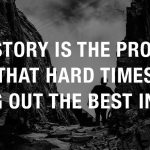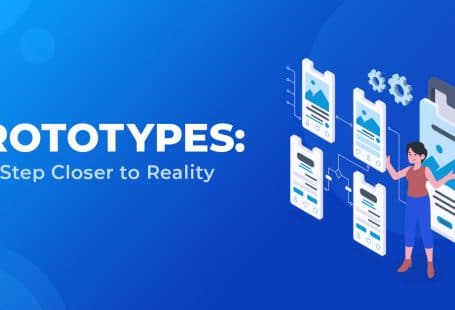What is an effective process of consulting?
It is a good starting point for this write-up.
Consulting is anything but one-dimensional. It comprises a range of practices that can be categorized in terms of professional expertise or a sequence of phases.
When we say professional expertise, it includes competitive analysis, corporate strategy, operations management, human resource, etc.
When we say a sequence of phases, it includes entry, contracting, diagnosis, data collection, feedback, implementation, and so on.
One can also break down the consulting process into different purposes. Here are consulting’s eight fundamental purposes.
1. Providing information to a client.
2. Solving a client’s problem.
3. Making a diagnosis, which may necessitate redefinition of the problem.
4. Making recommendations based on the diagnosis.
5. Assisting with the implementation of recommended solutions.
6. Building a consensus and commitment around corrective action.
7. Facilitating client learning—that is, teaching clients how to resolve similar problems in the future.
8. Permanently improving organizational effectiveness
Some of the above purposes are considered legitimate functions, and some of them are less likely to be addressed explicitly by the consultant.
Moving up the pyramid toward more ambitious purposes requires increasing sophistication and skill in the processes of consulting and in managing the consultant-client relationship.
Sometimes a professional tries to shift the purpose of engagement even though a shift is not called for. But reputable consultants do not usually try to prolong engagements or enlarge their scope. Wherever on the pyramid, the relationship starts, the outsider’s first job is to address the purpose the client requests. As the need arises, both parties may agree to move to other goals.
Gathering Information
Gathering information is the crux of any client-consultant interaction. The compilation of the information requires expertise, and this is where the role of a consultant comes into play.
Most of the time, information is all a client wants. But often there is a gap between the kind of information a client needs and the kind of information a consultant is asked to furnish.
More often than not, the client already has the relevant data, and it is just the question of using that data as efficiently as possible. But this must be communicated to the consultant, because being an outsider, he or she needs to know why the information is sought.
That being said, being a professional, it is the consultant’s job to explore the underlying needs of their client, and stick to the meeting’s agenda at the same time.
Problem Solving
Consultation is more about problem-solving, where the ultimate winner is the solution itself. In consultation, the solution is figured out by you and your client together.
On the other hand, when you try to convince your clients, it becomes more about self-validation. You see the solution as “Your solution”, and you want that solution to be accepted.
A consultant may encounter several client-problems (decision-making challenges). For example, clients may want to know whether they should divest a line of business or not, or whether they should modify their marketing strategy or not, etc. They may also require consultation regarding internal communication, management succession, and the likes.
A good consultant is the one who not only listens to different problems of a client but identifies and defines the real problem. The one which requires immediate attention.
Thus the consultant’s first job is to explore the context of the problem. To do so, he or she might ask:
- What were the past solutions and the results obtained?
- Concerning a solution, are there any steps that haven’t be tried by the client?
- If the solution is found, how it will be implemented?
- What should be done to achieve higher acceptability for the solution?
The consultant shouldn’t be too reactive to a client’s initial expression of the problem, meaning, the consultant shouldn’t reject or accept the client’s too readily.
The wiser approach is to focus on the client’s stated concern and use it as a solid base, while you explore the related factors, that may include sensitive information which the client is not comfortable discussing with an outsider.
As the consultation is more of a partnership, both the consultant and the client must work on it together, so that the problem can be broken down meaningfully or can be redefined. The idea should be to bring about useful conclusions naturally as the meeting proceeds.
A consultant must always remember that there is no point in providing a feasible solution to the wrong problem.
Implementing changes
To what extent a consultant should involve in the implementation, is debatable.
One school of thought says that the solutions should largely be implemented by the one who has recommended them, or at least they should have a greater say in the implementation process.
The second school of thought says that the implementation part should be taken care of by clients themselves, as the consultant will exceed the legitimate boundaries if he or she involves in the implementation process.
Reasonably speaking, if a client can participate in the problem-solving process without undervaluing the role of a consultant, then even a consultant can assist in solution implementation, without hijacking the manager’s role.
But yes, a consultant must understand which recommended actions are more likely to be implemented, and whether the client is prepared to do things differently. So keeping all this in mind, he or she might have to limit his or her recommendations.
But is it right to tell a client only what he or she wants to hear?
Well, it is a dilemma for experienced consultants, whether to tell what is right or tell what is accepted.
If the goal is to build commitment and develop the client’s effectiveness, then initially it is wiser to recommend actions that are more likely to be implemented.
Building Consensus & Commitment
The relationship with the principal client is especially important in developing consensus and commitment. From the beginning, an effective relationship becomes a collaborative search for acceptable answers to the client’s real concerns.
Ideally, each meeting involves two-way reporting on what has been done since the last contact and discussion of what both parties should do next. In this way, a process of mutual influence develops, with natural shifts in agenda and focus as the project continues.
Convincing recommendations depends on how persuasive a consultant is. Apart from being persuasive, it is important to design and conduct a process for:
- Reaching an agreement with the client regarding the necessary steps.
- Building momentum to successfully go through these steps.
Consulting is not just about convincing your client. It is about persuading clients with logic and analysis and creating an agreeable environment so that the given solution makes sense.
Consultants can gauge and develop a client’s readiness and commitment to change by considering the following questions.
- What information is accepted or resisted readily by the client?
- What are the motives that the client hasn’t expressed?
- How can one increase the client’s readiness for needed corrective action?
- Is the client willing to learn new management methods and practices?
- Do those at higher levels listen? Will they be influenced by the suggestions of people lower down? If the project increases upward communication, how will top levels of management respond?
- To what extent will this client regard a contribution to overall organizational effectiveness and adaptability as a legitimate and desirable objective?
If conducted skillfully, such questions can gather information and at the same time instill within the organization a belief that they must make some changes.
The consultant should put forward the rationale behind asking such questions. That the aim is not to discover what’s wrong and initiate a blame game but to encourage constructive ideas for improvement.
Such questions reveal the resistive elements (people) who may hold valid data and viewpoints. Wise consultants know that “resistance” or contrary viewpoints often become a source of important and otherwise unobtainable insight.
We hope you found this write-up insightful. We will be covering more on the subject in the upcoming write-ups.
Read more: Mobile app Development -Hestabit






